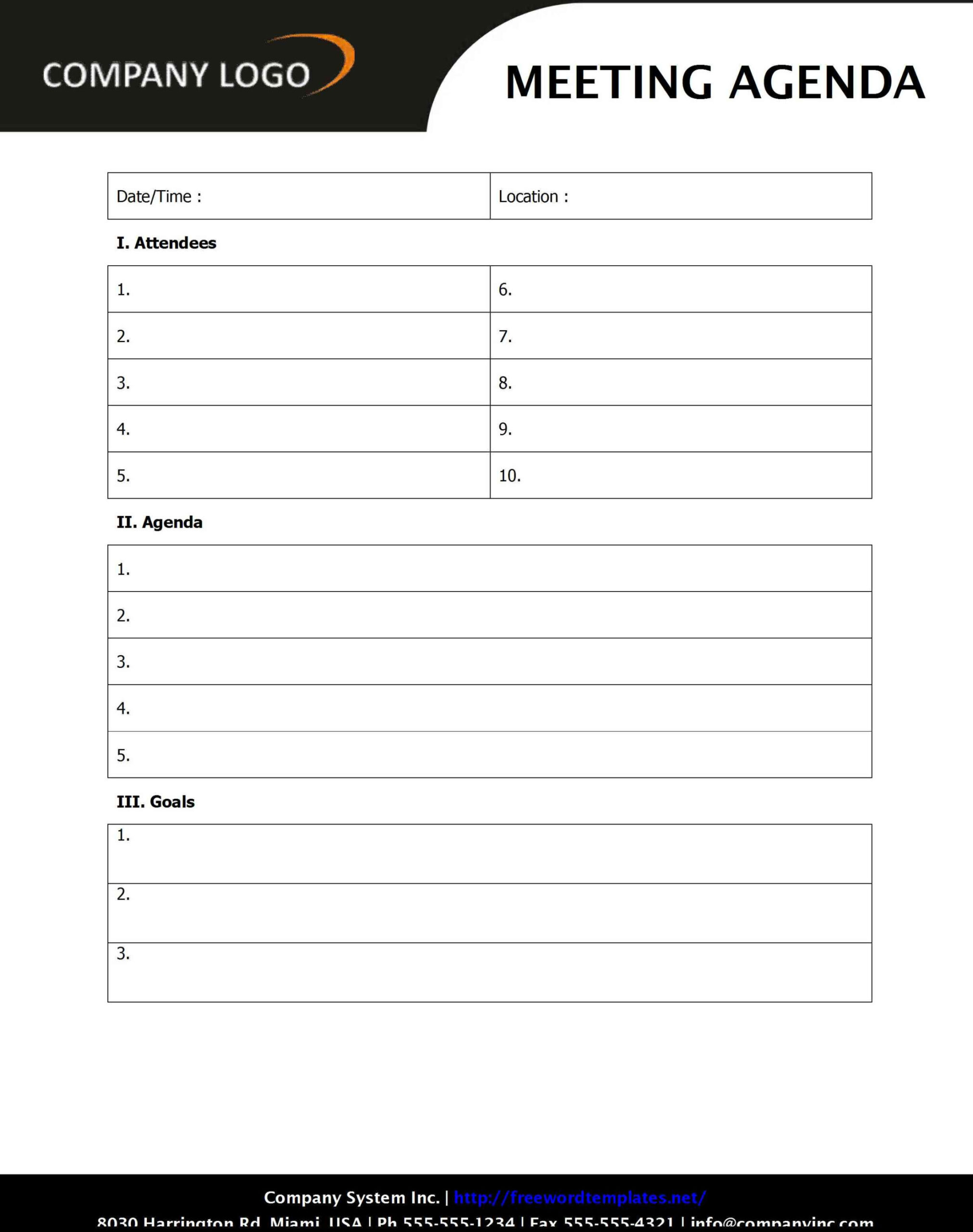A well-structured meeting Agenda is essential for conducting efficient and productive meetings. It serves as a roadmap, guiding the discussion and ensuring that all relevant topics are covered. Word 2010 offers a variety of tools and features that can be used to create professional and visually appealing meeting agenda templates.
Design Considerations

When designing a meeting agenda template, it is important to consider the following design elements:
Font: Choose a font that is easy to read and professional. Sans-serif fonts like Arial, Calibri, or Helvetica are good options. Avoid using overly decorative or difficult-to-read fonts.
Creating the Agenda Template
To create a meeting agenda template in Word 2010, follow these steps:
1. Open a New Document: Open a new Word document.
2. Insert Headers and Footers: Insert headers and footers to include the meeting date, time, location, and agenda title.
3. Create Sections: Divide the agenda into sections such as “Introductions,” “Review of Previous Meeting Minutes,” “Discussion Items,” “Action Items,” and “Next Meeting.”
4. Add Agenda Items: List the agenda items under each section using bullet points.
5. Format the Agenda: Apply the desired font, font size, line spacing, margins, and color scheme to the agenda.
6. Save the Template: Save the agenda as a template so that you can reuse it for future meetings.
Additional Tips
Include Time Estimates: If possible, include estimated time for each agenda item. This helps to keep the meeting on track.
By following these guidelines, you can create a professional and effective meeting agenda template that will help you conduct productive meetings.